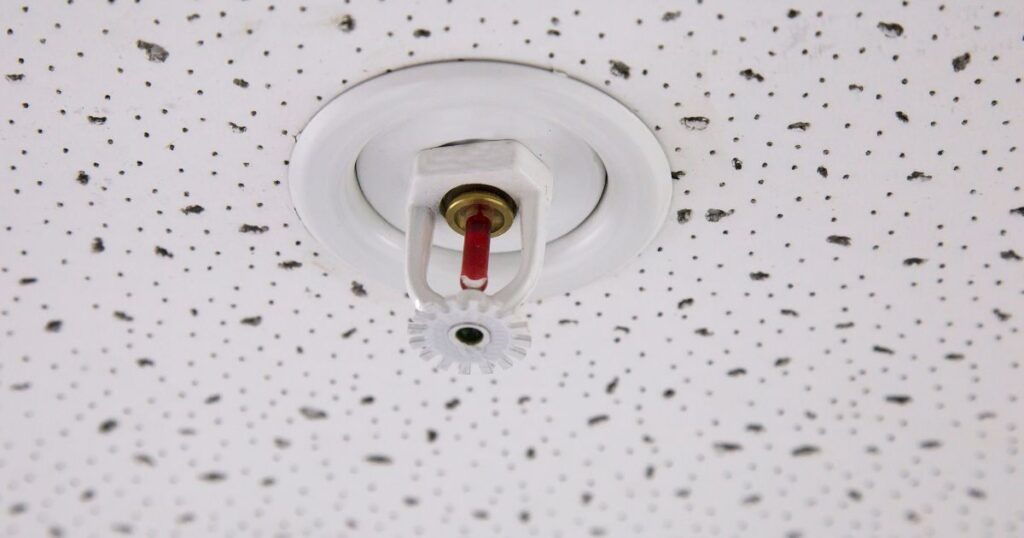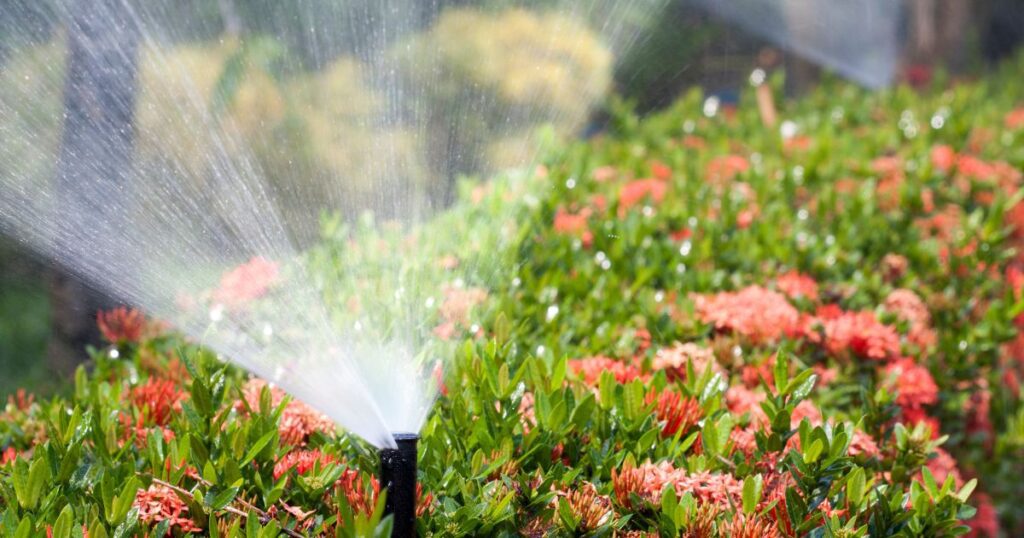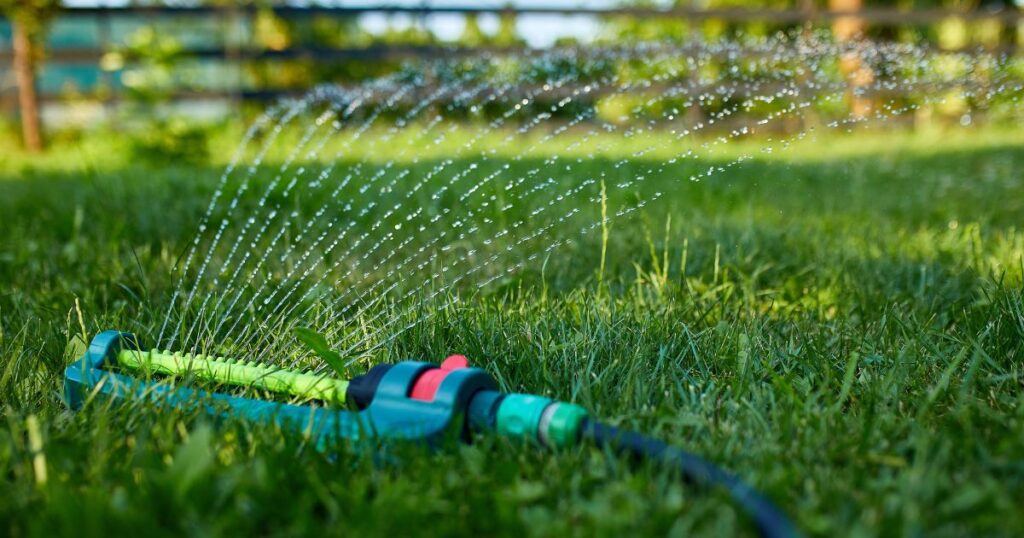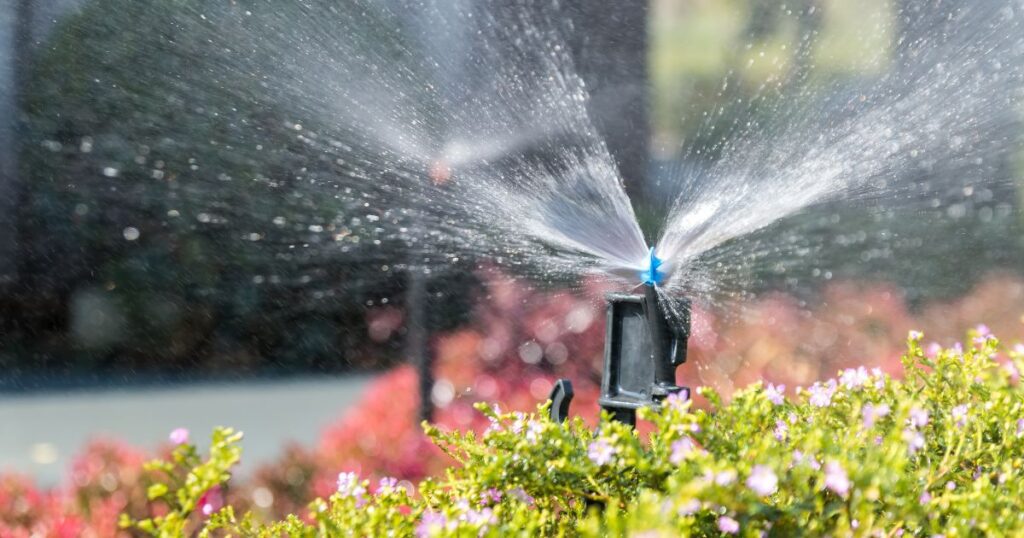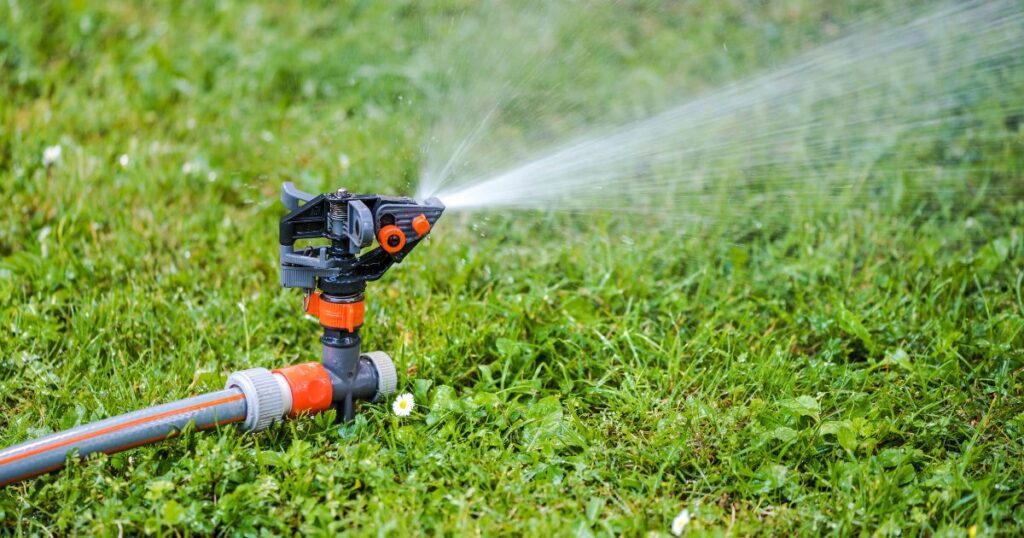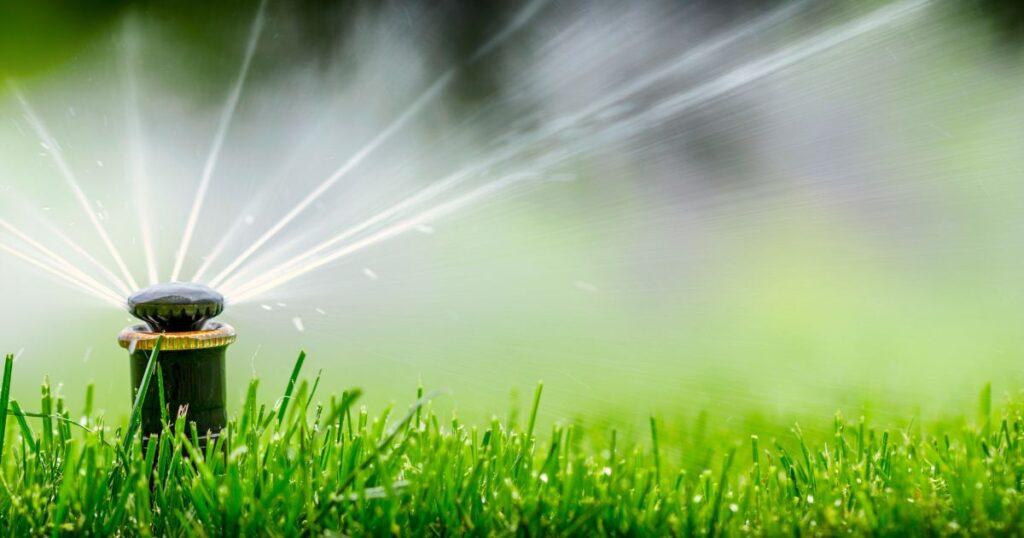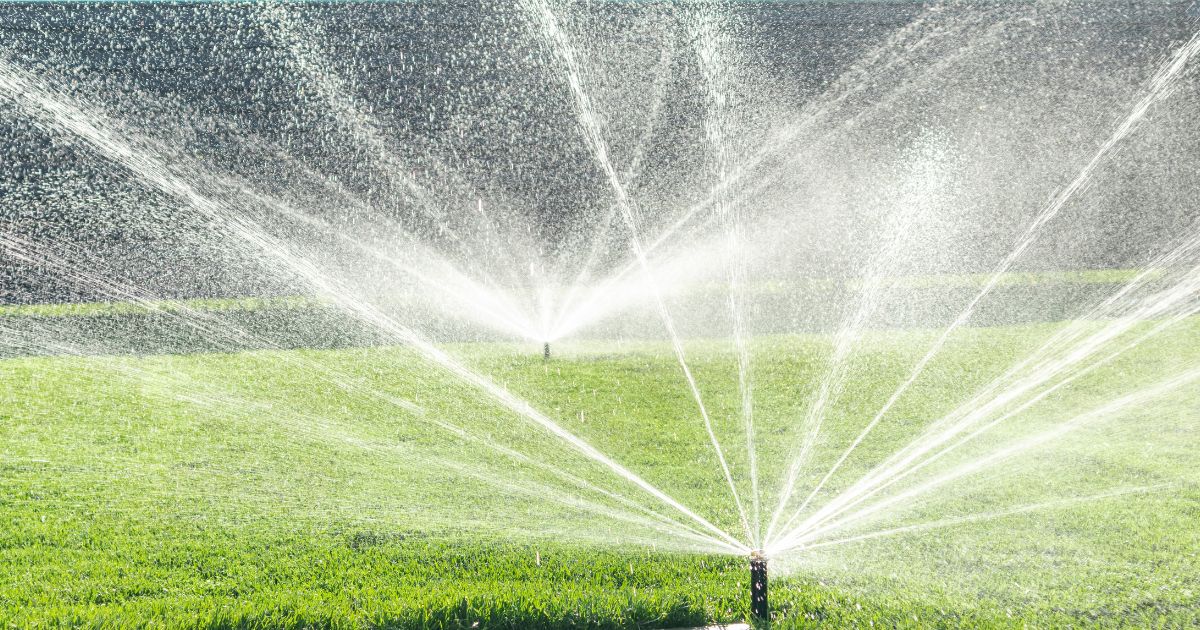
Are you ready to unlock the secrets of a lush and vibrant lawn in the scorching heat of Texas? If you wonder, how often should I water my lawn with sprinkler system in Texas? Well, fear not, dear reader, because we’ve got the inside scoop on watering your lawn with a sprinkler system in the Lone Star State. Get ready to dive into some refreshing tips and tricks that will leave your lawn looking greener than ever before. So, grab your sunhat and water hose because it’s time to quench your thirst for knowledge and achieve lawn perfection in the wild, wild west of Texas!
In Texas, it is generally recommended to water your lawn with a sprinkler system 1-2 times per week during the summer months. However, it’s important to consider factors such as soil type, grass type, and weather conditions. Monitoring your lawn’s moisture needs and adjusting your watering schedule accordingly will help you maintain a healthy and vibrant lawn in the Texan heat.
The Importance of Watering Your Lawn in Texas
As a homeowner with a lawn, you understand the importance of keeping your yard green and healthy. The state of Texas is known for its hot, dry climate, making it essential to irrigate your lawn regularly. Proper watering not only maintains the beauty and value of your property, but it also helps to support the local ecosystem by preserving habitat for insects and animals that rely on vegetation.
The Use of Sprinkler Systems for Efficient Watering
While there are different methods for watering your lawn, sprinkler systems are one of the most efficient options available. A properly installed and maintained sprinkler system can help you save time, water, and money on your utility bills.
These systems come with different types of sprinkler heads that can be adjusted to fit different areas within your yard. You can customize them to provide enough water per hour based on the size and shape of your yard.
Sprinkler systems also allow you to program when they should operate so you can ensure even coverage throughout all parts of your lawn without wasting water. This feature is especially useful when trying to adhere to any local watering restrictions or avoiding peak hours when water pressure may be lower.
When using a sprinkler system, it’s also important to monitor its output occasionally since some areas may require more or less water than others due to varying factors such as shade or slope. Utilizing a sprinkler system in Texas is an excellent way to conserve water while maintaining an attractive and healthy lawn.
With automated programs at hand, it’s now easier than ever before. Stay tuned as we delve deeper into how frequently you should be using such systems!
Factors to Consider When Watering Your Lawn with Sprinkler System in Texas
Soil Type and Composition
The type of soil in your lawn plays a significant role in how often you should water it. Sandy soils, for example, drain water more quickly than clay soils, which retain water. Knowing your soil type is crucial because overwatering can lead to wastage and cause runoff that could lead to erosion.
On the other hand, underwatering may cause stress on the grassroots since they will not receive enough moisture for growth. You can test your soil by digging a hole and examining its color and texture at different depths.
Moreover, the composition of the soil affects how much water it can hold. The ideal scenario is when the topsoil has organic matter that helps retain moisture while also allowing excess water to drain into deeper layers of the ground, where it will be accessible to grassroots during dry spells.
RELATED: Fixing Water Pooling Around Sprinkler Head When Running
Grass Type and Its Water Needs
Different types of grass have unique watering needs based on their respective characteristics, such as root depth and drought resistance abilities. For instance, Bermuda grass has a shallow root system that requires frequent watering but less duration compared to St Augustinegrass, which has deep roots that require less frequent watering but for longer durations. It’s always advisable to research what type of grass you have in your lawn before deciding on an irrigation schedule as well as consult with a professional lawn specialist who can guide you through the process.
Climate and Weather Conditions
Texas is known for its hot summers and unpredictable weather patterns; therefore, seasonal adjustments should be made accordingly when setting up an irrigation schedule. During summer months, when temperatures are high, evaporation rates are also higher, which means that plants lose more moisture than usual hence requiring more frequent watering sessions.
Conversely, during winter or rainy seasons, when humidity levels are high, less watering is required since there’s plenty of moisture in the air. Furthermore, areas that experience frequent droughts may require more water to maintain a healthy lawn.
Time of Day to Water
The time of day you choose to water your lawn will also contribute to its health and overall appearance. The best time is early in the morning or late in the afternoon, when temperatures are cooler and winds are calmer. This allows water to be absorbed by the soil before evaporation takes place, thus reducing wastage.
Watering during midday when temperatures are at their peak can result in loss of moisture due to evaporation rates being higher than absorption rates and can even lead to damage of grass blades due to intense sunlight rays causing burn marks. Nighttime watering is also not recommended as it could promote fungal growth and disease on your lawn.
The Importance of Watering Your Lawn with a Sprinkler System in Texas
Before delving into how often you should water your lawn with a sprinkler system in Texas, it’s important to understand why watering your lawn is essential. As we all know, Texas is a hot and dry state, which means that our lawns face many challenges when it comes to water availability.
Insufficient watering can lead to dry patches, brown spots, and even dead grass. When this happens, not only does it reduce the aesthetic appeal of your lawn, but it also lowers its overall health.
Luckily, sprinkler systems are an effective and efficient way of keeping your lawn healthy and green. They distribute water evenly across the entire area without wasting too much water through evaporation.
How Often Should I Water My Lawn With Sprinkler System In Texas?
Texas has four main climate zones: East Texas Piney Woods, Gulf Coast Prairies and Marshes, South Texas Plains, and Edwards Plateau. Each zone has different weather patterns that affect the amount of water needed for optimal lawn growth and health.
In general, lawns in Texas require an inch of water per week during periods when there is no rainfall. However, this varies based on location within each climate zone.
For example:
- Lawns in East Texas Piney Woods need more frequent watering as they receive more rainfall than other zones
- Lawns in Gulf Coast Prairies and Marshes need frequent watering due to high humidity levels
- Lawns in South Texas Plains require less frequent watering due to high temperatures
- Lawns in Edwards Plateau may require less frequent but deeper watering due to rocky soil.
These general rules provide a starting point for determining how often you should water your lawn with a sprinkler system.
Determining Specific Watering Needs Based on Factors Mentioned Earlier
While the general rules of thumb provide a good starting point, it’s important to remember that other factors can influence your lawn’s watering needs. Soil type and composition, grass type and water needs, and other weather conditions can all impact how much water your lawn requires. For example, sandy soils drain quickly and require more frequent watering than clay soils that hold moisture longer.
Similarly, warm-season grasses such as Bermuda or St. Augustine require more frequent watering than cool-season grasses such as fescue. To determine the specific watering needs of your lawn with a sprinkler system in Texas, consider the factors mentioned above.
Monitor your lawn’s color and growth patterns for signs of stress or overwatering. Adjust your sprinkler system accordingly to ensure that it provides just the right amount of water for healthy growth.
Examples and Scenarios for Different Lawn Types and Conditions
The following are examples of how often you should water lawns based on different types and conditions:
- New turf: Water daily for 1-2 weeks after installation
- Established lawns: Most lawns only need 1 inch of water per week during dry periods
- Heavy rain: Turn off sprinklers until the soil dries out
- Drought conditions: Water once every 3-4 days until rainfall returns. Remember that these are general guidelines; adjust accordingly based on factors like weather conditions, soil type, grass type, etc.
Tips for Efficient Watering with a Sprinkler System in Texas
Maximizing Water Efficiency
Water conservation is especially important in Texas, where drought conditions are common. Fortunately, there are several ways to maximize the efficiency of your sprinkler system and minimize water waste.
One way to do this is by adjusting sprinkler heads. A poorly adjusted sprinkler head can lead to uneven watering and wasted water.
Make sure each head is properly aligned so that it covers the intended area without wasting water on sidewalks or driveways. Another way to maximize water efficiency is by using rain sensors.
These devices detect when it’s raining and prevent the sprinklers from turning on unnecessarily. They can save homeowners up to 20% on their annual water bills.
Consider upgrading your system with high-efficiency nozzles or drip irrigation that deliver water directly to plant roots rather than spraying it into the air, where it evaporates quickly. These upgrades can significantly reduce water use while still providing adequate irrigation for your lawn.
Common Mistakes to Avoid
While there are many things you can do to improve the efficiency of your system, there are also several common mistakes homeowners make that wastewater. One such mistake is overwatering.
Many people believe that watering their lawn every day will keep it healthy and green, but this simply isn’t true. In fact, too much water can be just as harmful as too little!
Overwatering can cause shallow root growth, disease problems, and runoff that carries fertilizers and pesticides into our creeks and rivers. Another mistake homeowners make is watering during the hottest part of the day.
This not only wastes water through evaporation but also stresses out plants by causing them to lose more moisture through transpiration than they’re able to absorb from the soil. Avoid setting your timer based solely on convenience rather than need.
Just because you have your sprinkler set to run for a certain amount of time on certain days doesn’t mean your lawn actually needs that much water. Make sure to adjust watering times based on seasonal weather changes and the needs of your particular lawn.
By following these tips and avoiding common mistakes, you can significantly reduce water waste while still maintaining a healthy, green lawn in Texas. Remember to adjust sprinkler heads, use rain sensors, upgrade to high-efficiency nozzles or drip irrigation, avoid overwatering and watering during the hottest part of the day, and set timers based on need rather than convenience. With careful attention and smart upgrades, you can enjoy a beautiful lawn while also conserving our precious water resources for future generations.
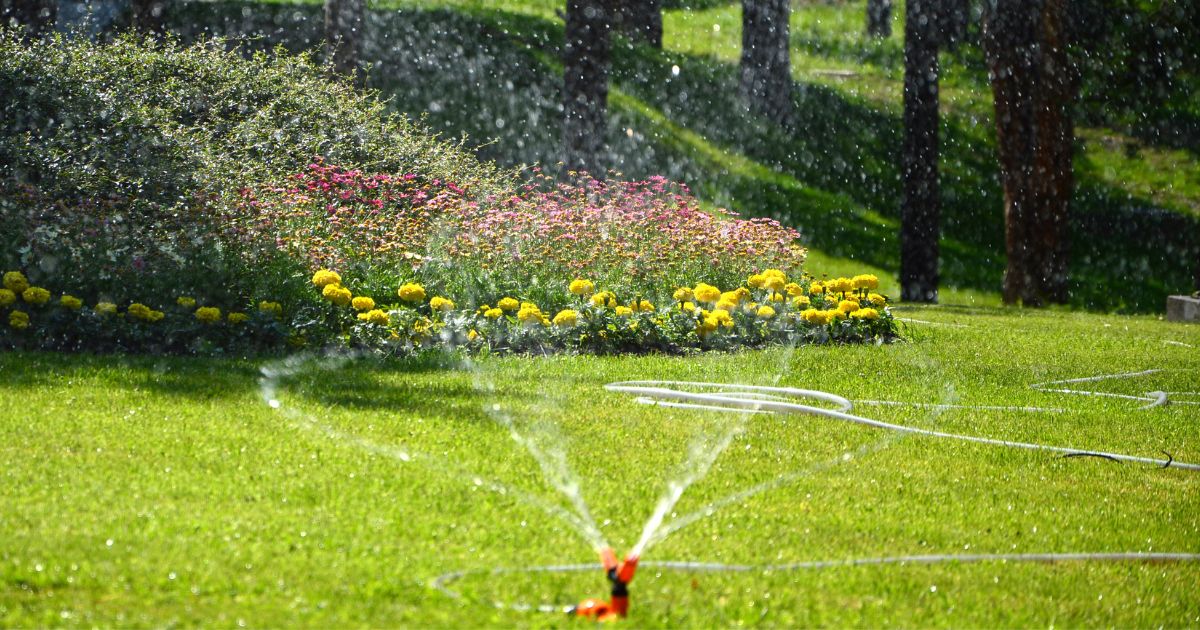
Frequently Asked Questions
How long should sprinklers run in Texas?
Sprinklers in Texas should run for approximately 30 minutes per zone, two to three times a week, depending on the specific water needs of your lawn and the local weather conditions.
How often and for how long should I water my lawn in Texas?
It is recommended to water your lawn in Texas about 1 inch of water per week, either through rainfall or irrigation. This can be achieved by watering deeply and infrequently, usually once or twice a week, for about 30 minutes to an hour per zone.
How often should I water my yard in Texas?
In Texas, yards generally require watering once or twice a week, depending on the specific needs of your lawn and the current weather conditions. It’s important to monitor the moisture levels of your soil and adjust watering frequency accordingly.
RELATED: How Long Should Sprinklers Run in Texas?
How often should I water my lawn in the spring in Texas?
During the spring in Texas, it is generally recommended to water your lawn once or twice a week, depending on rainfall and soil moisture levels. Adjust the frequency and duration of watering based on the specific needs of your lawn and the current weather conditions.
How long should sprinklers run in Texas in summer?
In the summer months in Texas, it is recommended to run sprinklers for about 45 minutes to 1 hour per zone, three to four times a week, to ensure adequate water penetration and prevent excessive evaporation.
When should I turn off my sprinkler system in Texas?
In Texas, it is advisable to turn off your sprinkler system during the cooler months of late fall and winter when the grass enters its dormant phase and requires less water. Typically, this can be done around late October or early November, depending on local weather patterns and frost risk.
Conclusion
Proper watering is essential for maintaining a healthy lawn in Texas, especially during times of drought and high temperatures. A sprinkler system can make efficient watering easier, but the frequency and duration of watering must be carefully considered based on various factors such as soil type, grass type, climate, and weather conditions.
Summary of Key Points
When using a sprinkler system to water your lawn in Texas, it is important to consider several factors, such as soil type and composition, grass type and its water needs, climate and weather conditions, and time of day to water. The general rule of thumb for watering frequency is based on climate zones in Texas; however, it is crucial to determine the specific watering needs of your lawn based on these factors. Mistakes to avoid when watering with a sprinkler system include overwatering or underwatering the lawn.
Overwatering can lead to fungal growth or shallow root systems that are more susceptible to disease or pests. Underwatering can cause the grass to become dormant or die off in areas where there is not enough moisture.
To maximize water efficiency when using a sprinkler system in Texas, you can adjust sprinkler heads for proper coverage and use rain sensors that turn off the system during rainfall. These methods will help conserve water while still providing adequate moisture for your lawn.
The Importance of Proper Watering
A well-watered lawn not only looks aesthetically pleasing but also provides numerous environmental benefits such as reducing erosion and improving air quality by absorbing carbon dioxide. In addition, proper watering promotes deep root growth which enables plants to better tolerate drought conditions.
By properly caring for your lawn with regular maintenance, including proper watering practices with a sprinkler system, you are helping preserve the natural resources found throughout Texas now -and for future generations to enjoy. By following the guidelines discussed in this article, you can maintain a healthy and attractive lawn that will thrive in the Texas climate.
Remember to consider the specific needs of your lawn and take steps to maximize water efficiency while avoiding common mistakes such as overwatering or underwatering. With proper watering practices and regular maintenance, your beautiful lawn will be the envy of your neighbors for years to come.

